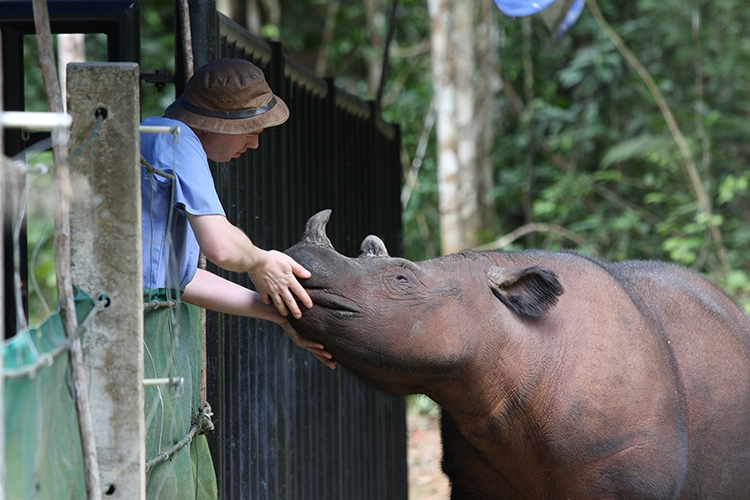Cornell Conservation Medicine Program

The Cornell Conservation Medicine Program works with people and endangered animals to help save species and their habitat (generous support provided by Kathy Ruttenberg and Cornell University).
Watch the PBS Video The Loneliest Animals
The Cornell Conservation Medicine Program brings together the disciplines of veterinary medicine, conservation and education to help people build a future for rhinoceros and other animals that share the rich rainforest, acacia bush and savanna homes of these prehistoric mammals. The program is based at the Cornell University College of Veterinary Medicine, an environment providing essential support by linking conservation practice with the best scientific disciplines in medicine, teaching, research and discovery.
Dr. Robin Radcliffe directs the Cornell Conservation Medicine Program and is determined to make a difference by enabling talented professionals to adapt health as a common tool to protect animals and landscapes. It is the people who make the real difference in wildlife conservation. Partners include a diverse and talented group of scientists and veterinarians including two doctors (Dedi and Andri) that care for the largest population of captive Sumatran rhinoceros (Dicerorhinus sumatrensis) in the world at the Sumatran Rhino Sanctuary and a young scientist who is broadening the scope of her training by adapting epidemiologic principles to help save the rarest of all rhinos on earth, the Javan rhinoceros (Rhinoceros indicus) in Ujung Kulon National Park in West Java. Moving from Indonesia to Africa, Robin also partners with one of the world’s most experienced rhino doctors who makes his home wherever endangered rhinos need help across Africa. Robin's twin brother, Dr. Rolfe Radcliffe, is an expert in surgery of the horse and has helped Robin with the care of both African and Asian rhinoceroses. Together they have traveled around the world helping endangered animals.
 Dr. Rolfe with a rhinoceros from Malaysia that he helped save by using his skills and training as a veterinary surgeon.
Dr. Rolfe with a rhinoceros from Malaysia that he helped save by using his skills and training as a veterinary surgeon.
Besides bringing a scientific foundation to conservation problems focused on rhinoceros and their threatened homes, the Radcliffe brothers work closely with the local people and children. Along with Dr. Dedi and the staff at the Sumatran Rhino Sanctuary in Indonesia, Living Fossil developed a unique program to educate children about the rhino and the rainforest through story and dance. Children learn about the rhino through an Indonesian heritage rich in colorful dancing animal forms that now includes the rhino. Few children know of the rhino in rural Sumatra because it is a solitary creature and is seldom seen. Robin also authored a children’s book about Sumatra’s rare rhinos. Children learn firsthand about the rainforest and its creatures as an animated rhino dances down the village street. Conservation medicine embraces the individual animal while building a sustainable relationship with the land and its people.

